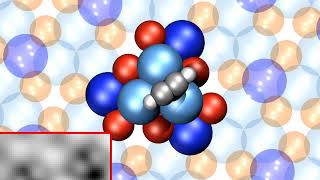The smallest motor in the world is puzzling researchers from the Swiss Federal Laboratories for Materials Science and Technology (Empa) and the École polytechnique fédérale de Lausanne (EPFL). They have developed a molecular motor that only consists of 16 atoms and reliably turns in one direction. However, the laws of quantum physics state that both directions of rotation must be equally likely. This could potentially challenge one of the fundamentals of the quantum world.
This motor measures less than one nanometer. As with bigger motors, it consists of a fixed part (a stator) and a moving part (a rotor). Oliver Gröning, Head of the Functional Surfaces Research Group at Empa in Dübendorf, explains in the press release: “For a motor to actually do useful work, it is essential that the stator allows the rotor to move in only one direction.”
Unlike other molecular motors, this one has 99 percent directional stability. This means that energy production could be possible on an atomic level. However, this molecular motor also straddles the border between classical physics and the quantum world.
According to the laws of classical physics, the rotor should stay still if the minimum amount of energy to set it moving against the resistance is not provided. Surprisingly, the researchers were able to observe a constant rotation frequency in one direction even below this energy threshold.
According to the laws of quantum physics, particles can “tunnel”. This means that the rotor can still overcome the resistance if the amount of kinetic energy is insufficient in the classical sense. This tunnel movement normally occurs without any loss of energy. Gröning explains: “If no energy is lost in the tunneling event, the direction of the motor should be purely random.” The fact that this is not the case “therefore indicates that energy is also lost during tunnel movement.” This astonishing discovery could now make it possible to study “the processes and reasons for energy dissipation in quantum tunneling processes.”
Related news
Contact us
Can we put you in touch with a peer company or research institute? Do you need any information regarding your strategic expansion to Switzerland's technology and business center?
info@greaterzuricharea.com
